Our plant sale is done for the season. Thanks to everyone who participated and helped restore nature in our Keweenaw gardens!
Yes, fall is a great time to plant. Natives love the cool soil and autumn rains, and come spring, they’ll be ready to leap out of the ground and into your heart.
Plant Your Own Pollinator Paradise
Create a wildlife oasis in your yard! The Wild Ones Keweenaw chapter is holding its first sale of the summer. We are offering a selection of native plants to get you started gardening for butterflies, birds, and pollinators.
Check out the plants below and think about what you’d like in your garden. Then visit our shop and place your order. Simple!
Love native plants? Want to take advantage of pre-sales and get a discount? Join the Wild Ones Keweenaw chapter! Sign up here!
How our sales work
Our plant sales are online, but we are not Amazon. If you have trouble checking out, email your order to [email protected].
Otherwise, here’s what to do:
Go to our Shop and pick out your plants.
Check out. You may select PayPal or “pay on delivery,” i.e., pay when you pick up.
You will receive an email when your order is complete.
We will set up a time to pick up your order at your earliest convenience.
The last day to pick up orders will be Sunday, September 20, 2025.
After making an appointment, pick up your order at
1284 Hickory Lane, Houghton.
Questions? Email [email protected]
Love native plants? Want to take advantage of pre-sales and discounts? Join the Wild Ones Keweenaw chapter! Sign up here!
Read about these fascinating plants, then visit our shop.
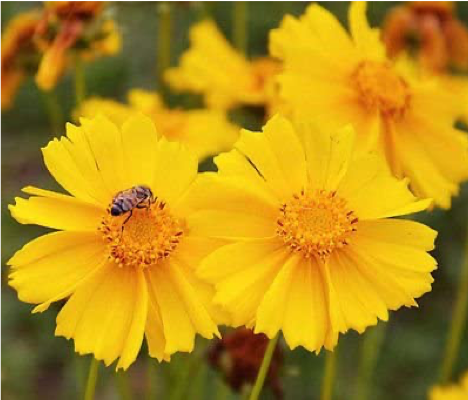
Monarch Mini-Garden
This mini-garden includes common milkweed, one of the few plants that monarch caterpillars can eat. It’s also designed to provide butterflies and other pollinators with nectar from early summer until fall—and give you a bargain on some great plants. You’ll get two each of lance-leaf coreopsis, New England aster, wild bergamot and common milkweed. The common milkweed is a spreader, so choose a spot where it has room to run.
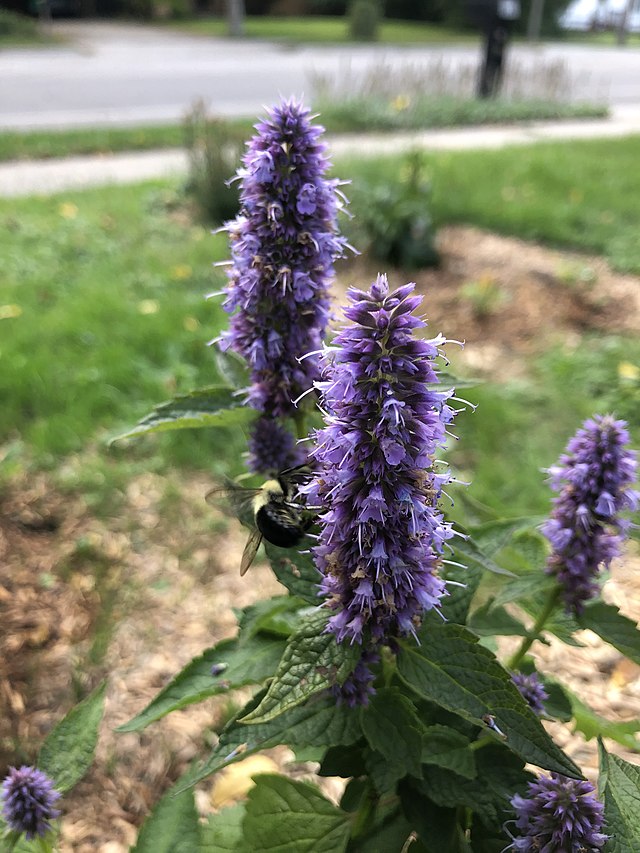
Anise Hyssop Agastache foeniculum
Super easy-to-grow and very long blooming, this pollinator magnet has a lovely aspect in the garden and fits in most anywhere that has lots of sun and well-drained soil. Its survival strategy is to spread seed abundantly, so don’t be surprised if it turns up in cracks in the sidewalk. Anise hyssop earned its name honestly; its leaves have a lovely citrusy-minty-licorice scent that make a great garnish.
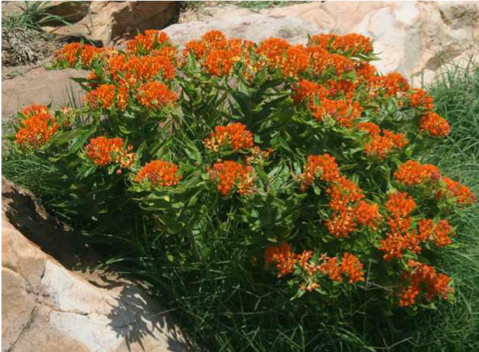
Butterflyweed
Asclepias tuberosa
This dandy plant grows in miserable sandy soil in full sun; once established, it is hardy as stone. Beloved by pollinators and humans alike, its blooms are regularly bedecked by monarchs. Plant butterflyweed and help keep our favorite butterfly coming back year after year.
/
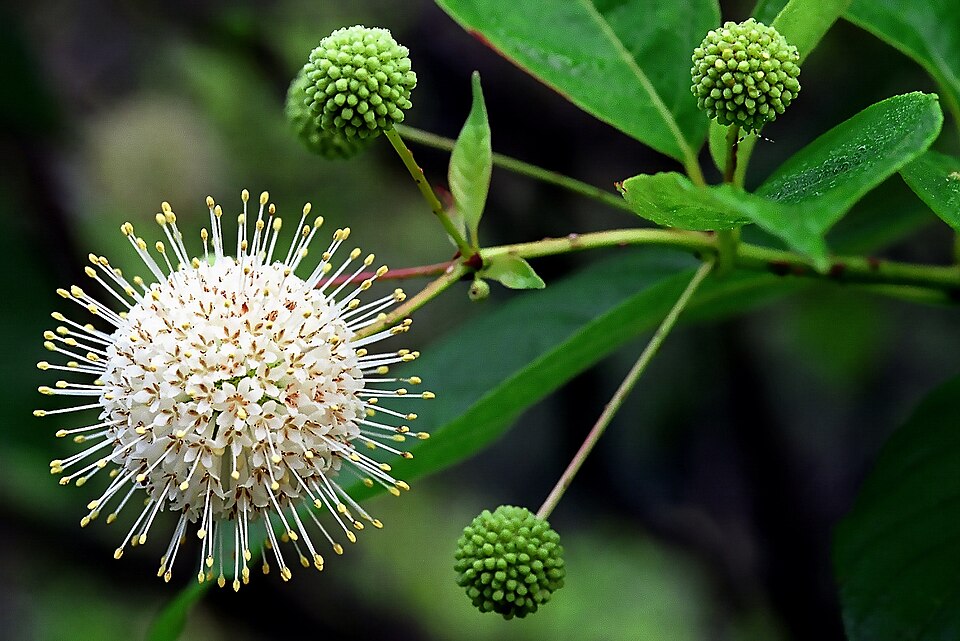
Buttonbush
Cephalantus occidentalis
If you are searching for a small tree/large shrub that likes wet feet, look no further. Buttonbush loves damp, swampy places. It has an interesting, twisted trunk, open crown and spreading branches. Butterflies and other pollinators are attracted to the long-blooming “button” flowers, and birds enjoy the seeds in the fall.

Columbine Aquilegia canadensis
Columbine has everything going for it: it’s widely adaptable, it’s beautiful, hummingbirds love it, and it pops up in the most unexpected places. Should you grow columbine? Of course you should.
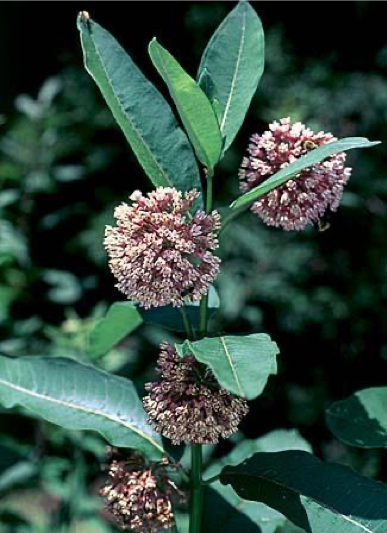
Common Milkweed
Asclepias syriaca
Will grow in nearly all soils, so long as they aren’t too wet. Plant in full to partial sun 1 foot apart. Beloved by butterflies, especially monarchs, which only lay their eggs on milkweed plants. Common milkweed is an aggressive spreader where it is happy, so give this plant some room to run and you won’t be disappointed.
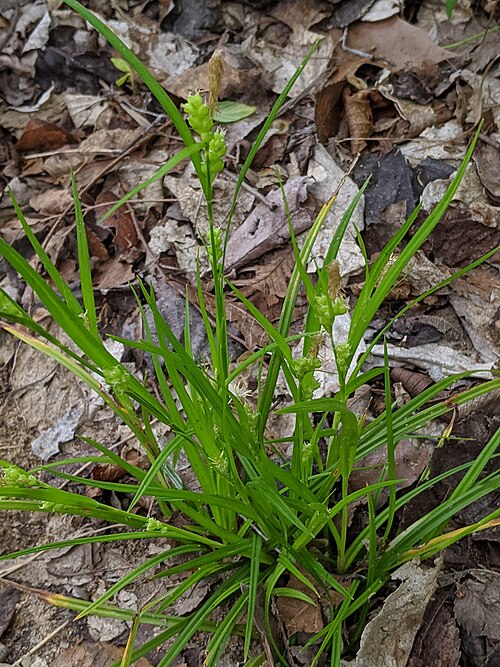
Common Wood Sedge
Carex blanda
Need a filler for shady areas? Carex blanda could be your plant. It’s not fussy about conditions (even full sun is OK) and deer and rabbits seem to find it quite unpalatable. Take advantage of its small stature and tuck it in amongst some forbs and enjoy the contrast.
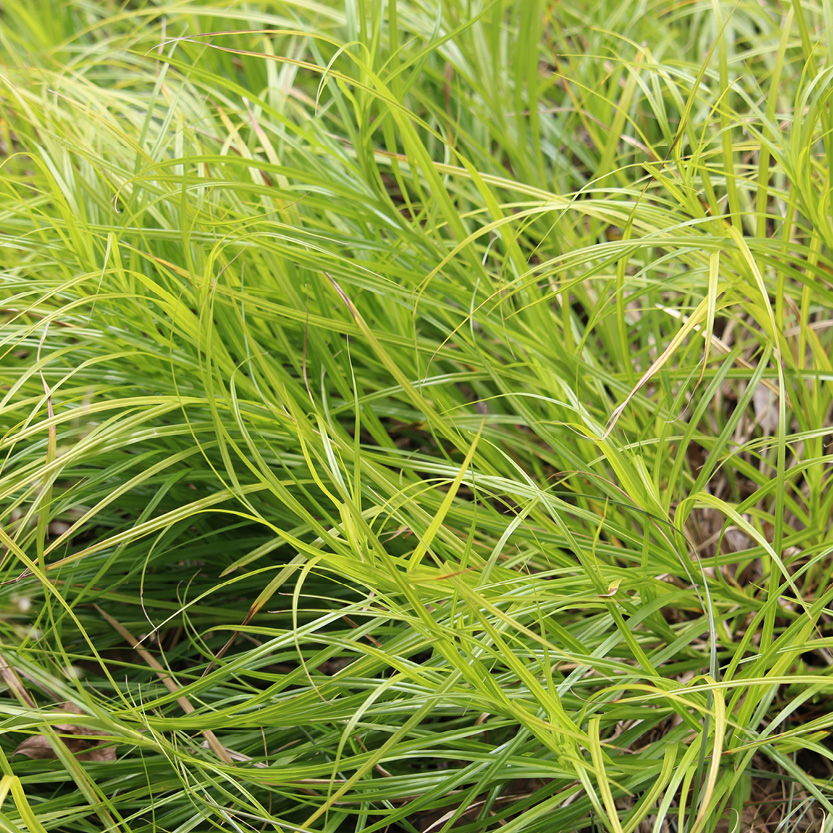
Copper Shouldered Oval Sedge
Carex bicknellii
Adaptable, attractive sedge that tolerates drier conditions. Especially recommended for slopes, bioretention basins, rain gardens and sedge meadows. Does well in full sun to partial shade, and can be compromised if shaded by taller, aggressive plants. Named for the copper-colored seed heads, which are beloved by birds, including sparrows and pheasants.
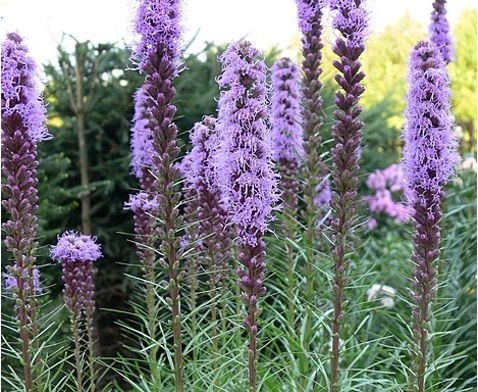
Dense Blazing Star
Liatris spicata
This gorgeous midsummer bloomer deserves a place in most any garden, so long as it’s not too dry; it might appreciate a drink during those occasional midsummer droughts. Consider pairing with another showstopper, purple coneflower. Very similar in appearance to prairie blazing star, Liatris spicata has even more flowers per head with smooth-pressed floral bracts, while the floral bracts of L. pycnostachya are clearly curved outward, or recurved.
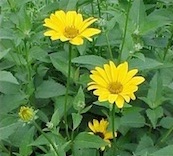
False Sunflower
Heliopsis helianthoides
Easy to grow and very pretty, false sunflower (aka early sunflower) loves sun and just about any soil or moisture condition, though it does appreciate a little extra dampness. It can form a focal point at the back of the garden and is beloved by pollinators and birds. Bonus! Beautiful sunflower-type flowers without sunflowers’ tendency to spread.

Foxglove Beardtongue
Penstemon digitalis
Extra-pretty early summer bloomer that likes most kinds of soil so long as it’s not too wet or too dry. Looks especially nice with Ohio spiderwort. Add some grasses and later-blooming forbs (like purple coneflower) to extend the season of interest.
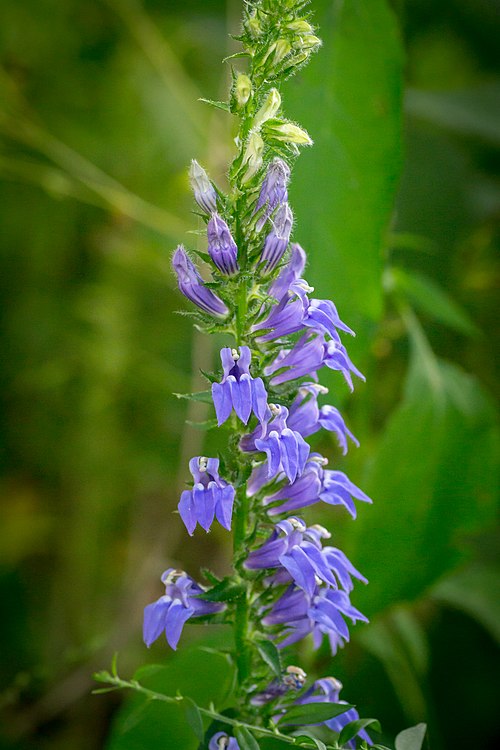
Great Blue Lobelia
Lobelia syphilitica
Superb, easy-to-grow stunner, so long as you honor its main requirement: moist soil. Excellent for damp clay. Does well in the perennial border, shade gardens, woodland plantings…just about anywhere you put it in the ground so long as it’s wet enough. It will shock you with how quickly it takes off, with the added bonus that deer seem to leave it alone.

Hairy Beardtongue
Penstemon hirsutus
Don’t let the picture fool you. This lovely garden plant typically sports flowers of purpley lavender, but white variations are not uncommon. A bumblebee magnet, no matter the color. Bonus: It grows almost anywhere.
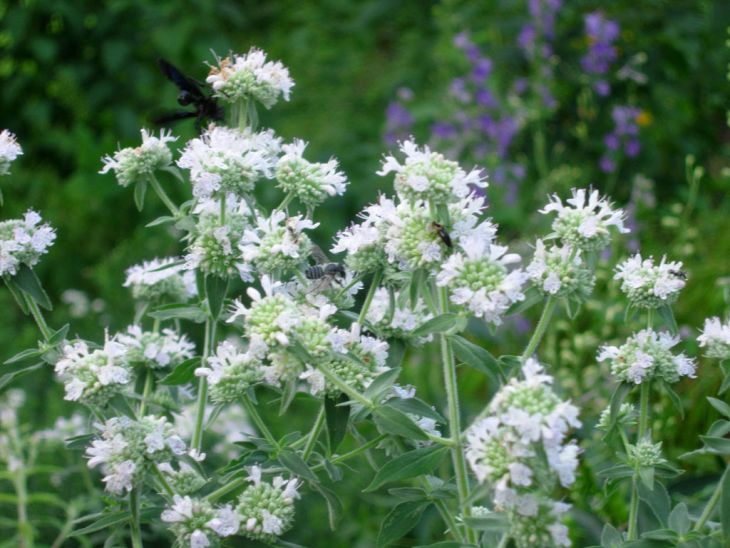
Hairy Mountain Mint
Pycnanthemum verticillatum var. pilosum
People find hairy mountain mint pretty, but pollinators consider it irresistible. It’s easy to grow, pretty, a nice size… it might be a spreader, so when you plant it, consider the neighborhood. That said, it’s been well behaved in my yard.
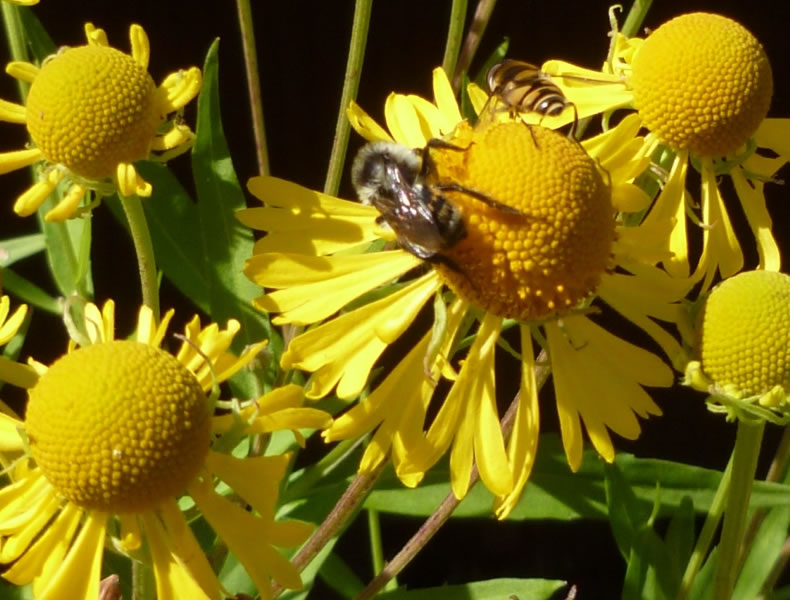
Helen’s Flower/Dogtooth Daisy
Helenium autumnale
This delightful plant loves full sun and handles all kinds of soils, doing best if they are damp. The charming flowers bloom en masse late in the season—maybe plant several together in a nice clump. The genus is thought to have been named by Linnaeus (the guy who began giving plants scientific names) for the world’s most beautiful woman, Helen of Troy. Legend has it that the flowers sprung up from the ground where her tears fell.
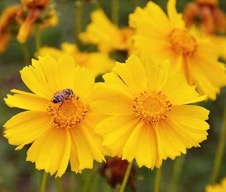
Lance-leaf Coreopsis Coreopsis lanceolata
Lance-leaf coreopsis is the hands-down workhorse of the summer garden, throwing an exuberant display of flowers when it seems like every other plant has thrown in the towel. Dead-head to keep the show going on, and on, and on. As you would expect, lance-leaf coreopsis is not fussy. It just likes lots of sun and not too much water.
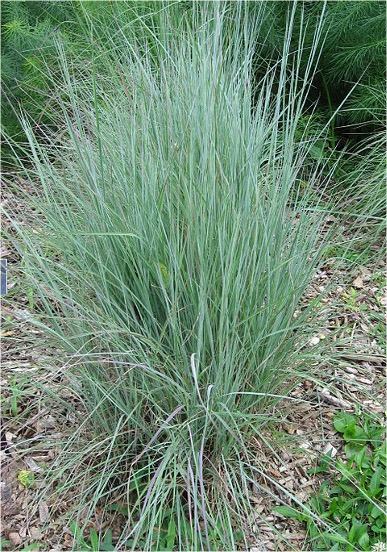
Little Bluestem
Schizachyrium scoparium
One of our most eye-catchiing ornamental grasses, it sports attractive blue-green foliage that turns a striking burgundy red in fall, with stems topped by pale, silvery seed heads. Like most native grasses, it appears impervious to deer.
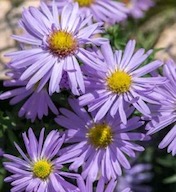
New England Aster Aster novae-angliae
Tons of gorgeous pink to purple blooms in the fall are a late-season godsend for butterflies and other pollinators. Good luck counting how many species you can find at one time nectaring on this aster. Can get tall and leggy, so if that bugs you, pinch back in early summer or put in the back of the border. Likes sun and partial shade and almost all soils, so long as they aren’t super dry.

Pearly Everlasting
Anaphalis margaritacea
This underused plant thrives in sun and sandy soil with a bit of moisture. It’s a great filler, and the blossoms are charming. It is a host plant for caterpillars of the American lady butterfly, but it can handle being munched on once it is established. These two species have known each other for a long time.

Prairie Dropseed
Sporobolus heterolepsis
The reigning emperor of decorative native grasses, prairie dropseed excels as a border plant and nestled in amongst forbs to form a weed-foiling matix. Loves sun and well drained soil.
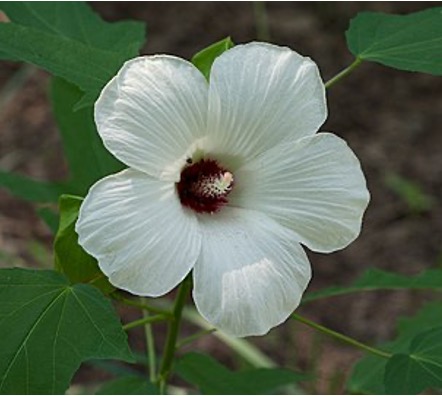
Rose Mallow Hibiscus laevis
These blooms are so fancy you might be tempted to think they aren’t native to the U.S., but indeed they are. While it loves the wet, you can grow rose mallow (aka halberd-leaf rosemallow) in your garden, so long as it has rich, moist soil. This isn’t a plant for dry sand. While it will tolerate some shade, it flowers best in full sun. It attracts butterflies and other pollinators with its showy blossoms.
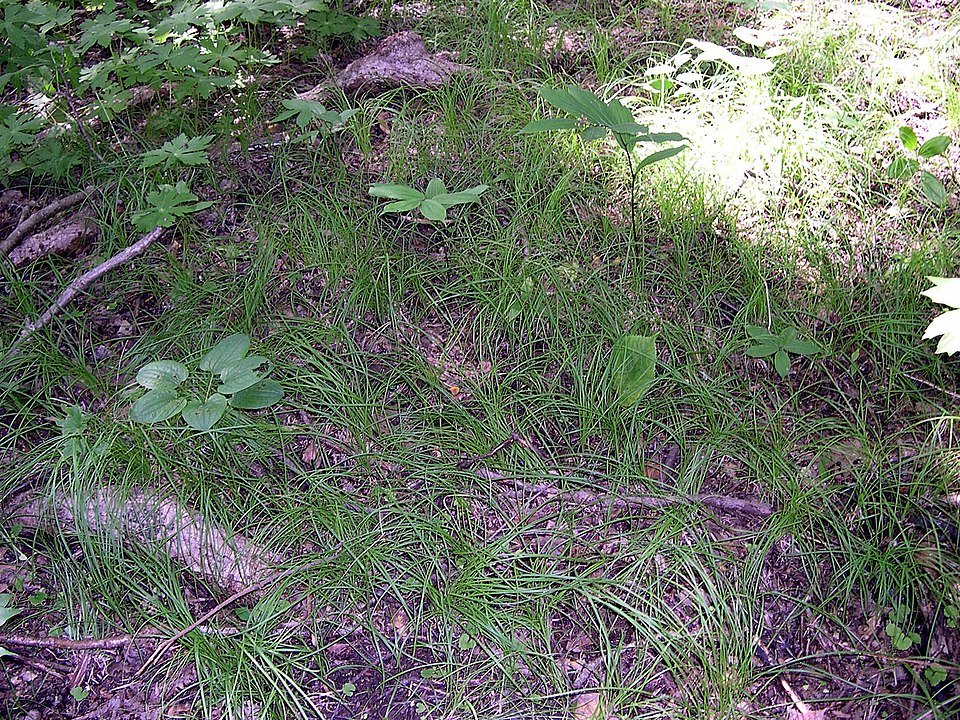
Pennsylvania Sedge
Carex pensylvanica
Drew attention a few years back as a lawn substitute, but plenty nice as an adaptable matrix plant in shade or semi-shade situations. Penn Sedge stays nice all season long, never getting floppy, perhaps a side effect of its diminuative size.
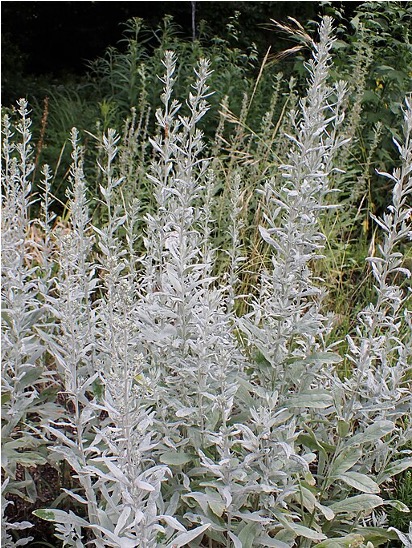
Prairie Sage
Artemisia ludoviciana
An attractive–and aggressive–groundcover, prairie sage is sacred to the people who originally settled in the Keweenaw. It loves rocky, sandy soil; installing it in a tough spot where other plants fear to tread would be a good strategy. It’s silvery foliage is lovely, and it smells divine.

Showy Goldenrod
Solidago speciosa
A gold-medal plant for pollinators, Showy Goldenrod deserves to be planted a lot more than it is. This is one fantastic fall bloomer, flowering a little later than most goldenrods and thereby providing a late season nectar source for Monarch butterflies and other pollinators. It has a showy feathery plume on a red stem and looks good paired with Black-eyed Susan, Stiff Gentian, Blazing Stars, and all by its gorgeous self.
Showy Goldenrod tolerates a range of soils as long as there is good drainage. The plant can be grown in prairies, fields, thin rocky soil and on dry, open, sandy ground. Best in poorer soils and/or with competition, so it doesn’t overgrow.

Smooth Blue Aster
Symphyotrichuym laeve
Lovely and similar to the another prolific fall bloomer, Sky Blue Aster, with the added bonus that it will grow in clay. The leaves are smooth, whereas Sky Blue Aster’s have a rougher texture. Another difference is that Smooth Blue Aster spreads slowly by rhizomes, so that may figure into your choice.
Native to the Keweenaw, this aster is a host plant for the Northern Crescent butterfly and Wavy Lined Emerald Moth.
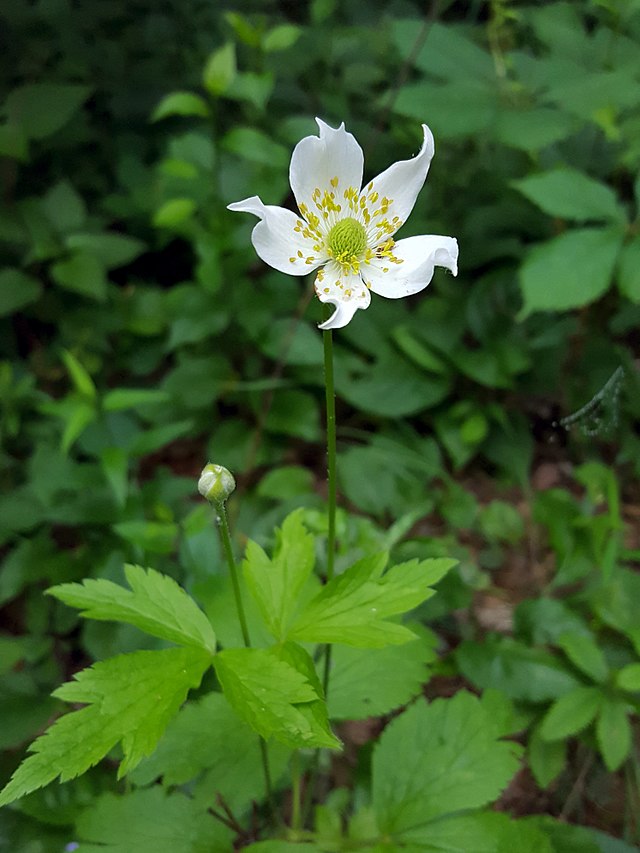
Tall Thimbleweed
Anemone virginiana
Delicate-looking woodland plant that’s tough as nails, especially where deer are concerned. While it’s typically found in shady spots, it will do fine in the sun. Bonus: It doesn’t need a lot of water, so if you garden in Keweenaw sand, this plant should work for you. Plus it has precious, delicate flowers that show up before the late-summer garden extravaganza, just when we need them most.
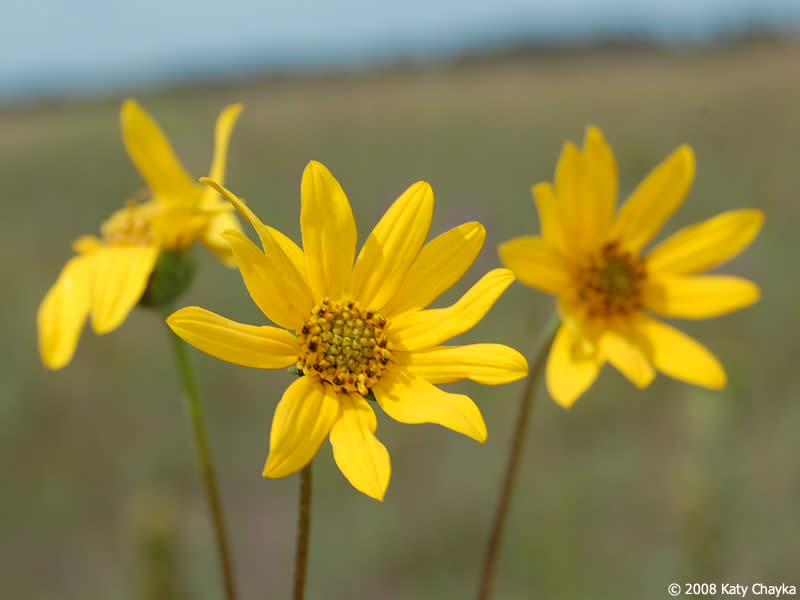
Western Sunflower
Helianthus occidentalis
Sunflowers bring so much to the party. Pollinators and people love the blossoms, birds love the seeds, and they are hosts plants to all sorts of little critters. In short, they are one of nature’s happy plants. We are offering western sunflower because it’s not super aggressive (as some sunflower species can be) and at 2-3 feet tall, it’s relatively demure. Enjoy the yellow flowers perched atop naked stems.
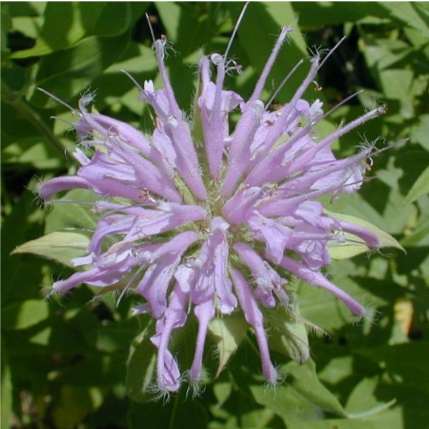
Wild Bergamot
Monarda fistulosa
A showy addition to the native garden, wild bergamot has a special advantage in being on deer’s do-not-eat list. The flowers are gorgeous and a favorite of hummingbirds. The long bloom period provides a continuing source of food for many pollinators.
Fair warning: It is susceptible to mildew. Good air circulation helps, as does dividing large plants every two to three years. That said, a little mildew is a small price to pay for this treasure.
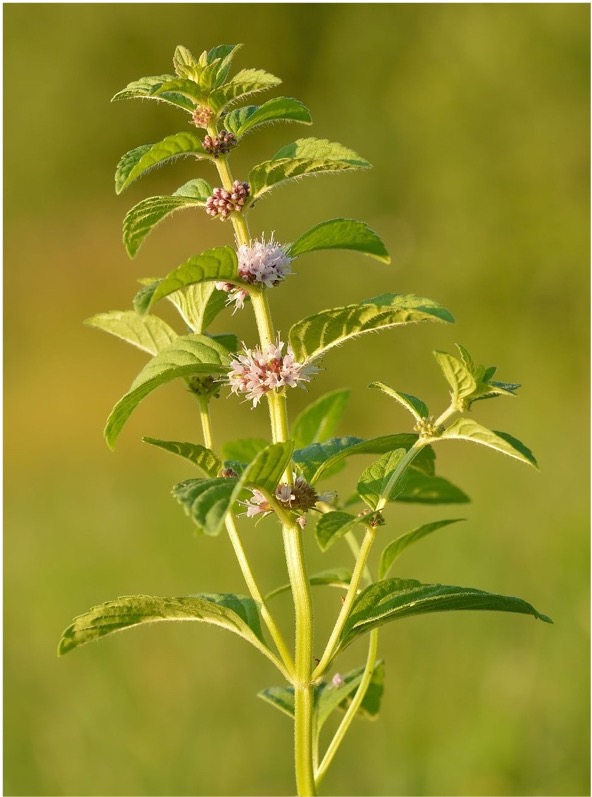
Wild Mint
Mentha canadensis,
M. arvensis
Wild Mint is our only true native mint and can be found throughout the western U.S. and the Northeast. Like its nonnative cousins, it can be aggressive, so plan accordingly. That said, it’s nectar is fantastic for native bees, and its flowers are so darling, that you may want to make accommodations. Plus it has that divine minty fragrance that we love and deer and rabbits hate.
Wild Mint does best in loam and clay soils with some moisture.
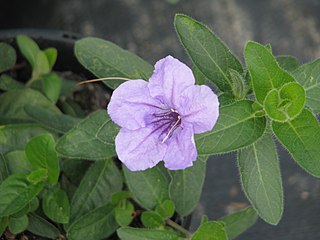
Wild Petunia
Ruellia humilis
A low-growing denizen of prairies and oak openings, wild petunia is a lovely little border plant that starts blooming in midsummer and continues throwing flowers through fall. It does well in poor soil, thanks to its taproot, and plays well with others.

Blue Iris Iris versicolor
Blue Iris has very showy blue-purple flowers that attract hummingbirds and are beneficial to pollinators. It thrives in wetland habitats in sunny areas that include rain gardens, water gardens, wet meadows, marshes, along shores, in ditches and in swamps, though–AMAZING–it will also do well in a tended garden. I’ve seen it thriving in Hancock sand.
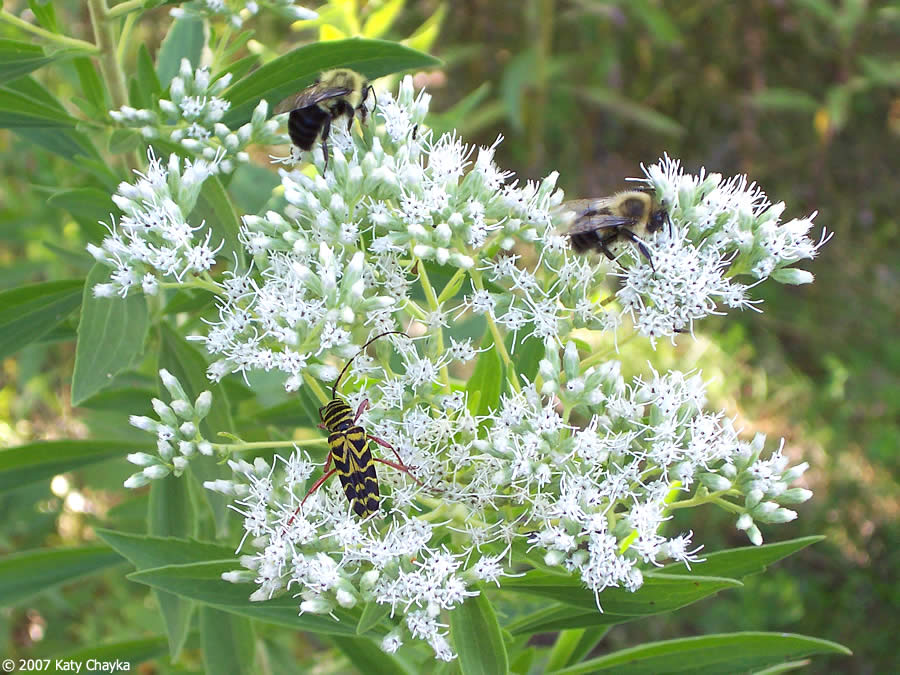
Tall Boneset
Eupatorium altissimum
OUT OF STOCK
Lots of pollinators love flowers that form landing pads, and tall boneset does just that. This rugged individual adds a dash of white to the fall landscape and is excellent for dry to medium conditions.

Sky Blue Aster
Aster azureus
OUT OF STOCK
Easy-to-grow aster that booms freely with generous sprays of lavender blue flowers. Sky blue aster is quite tolerant of dry conditions, making it a good choice for the Keweenaw. Goes great with showy goldenrod’s massive, sunny plumes.
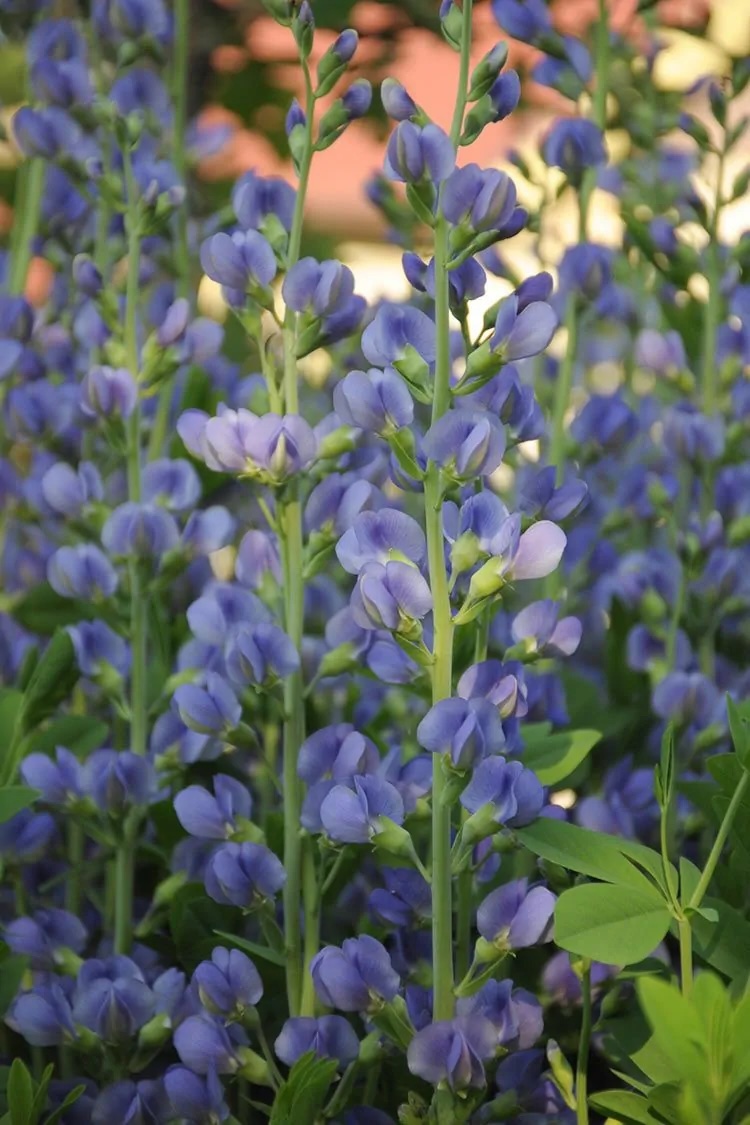
Blue False Indigo
Baptisia australis
OUT OF STOCK
Excellent specimen plant no matter the context, from formal garden to natural meadow. Slow to mature, its branching foliage and blossoms become showier and more developed with each growing season until it attains its characteristic bushy shape. Enjoy in in foundation plantings or even a faux shrub border.
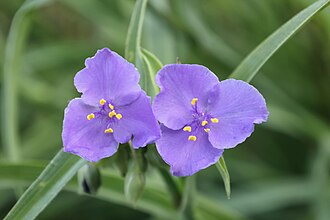
Ohio Spiderwort Trandescantia ohiensis
OUT OF STOCK
An easy-to-grow plant with interesting foliage that provides a nice contrast in the summer garden. Not as aggressive as other spiderworts, but still a spreader, so be aware. Great with penstemons and butterfly weed. It starts looked pretty ragged late in the season; consider planting with some grasses and/or later-blooming natives. The showy flowers open in the morning and close in the afternoon.
